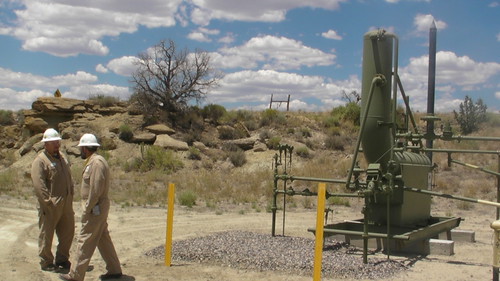歐巴馬政府28日提出減少甲烷排放的新對策,以垃圾掩埋場、煤礦、酪農業以及石油天然氣系統為主,做為其去年6月宣布之氣候行動計畫的一部分。
「甲烷汙染」不容小覷
甲烷是天然氣的主要成份,也是一種溫室氣體,暖化威力是二氧化碳的21倍,排放量佔美國人為溫室氣體總排放量近9%。1990年起,雖然美國產生甲烷的活動增加了,甲烷汙染卻減少了11%。
減少甲烷廢氣和汙染,是相當重要的溫室氣體減量行動,如果不採取行動減少甲烷排放量,預計到了2030年,甲烷汙染程度將增加到等同於6億2千萬噸的二氧化碳汙染。
歐巴馬政府的新策略承諾將減少甲烷排放,顯示美國政府改善溫室氣體排放標準的努力,白宮稱之為「具成本效益的自願行動;符合基本常識之認定標準」。
垃圾場、廢礦、酪農業 環署逐步立法減甲烷
2014年夏天,美國環保署將提出新標準,以減少新垃圾掩埋場甲烷排放,並針對是否要讓舊垃圾場同步採用新標準聽取公眾意見。
2014年4月,土地管理局(BLM)就將進入立法程序,以落實管理廢礦甲烷在聯邦政府租地上的捕集、出售或處理。
2014年6月,美國農業部、能源部和環保署將展開跨部門合作,和酪農業合作發表「生質氣體藍圖」,規劃出一連串自願性措施,加速推廣厭氧消化和其他高成本效益的技術,目標是在2020年減少30%的美國酪農產業溫室氣體排放量。
尋求「下游」甲烷減量 政府與業界合作
今年春天,環保署將評估石油和天然氣產業的甲烷及其他氣體排放量,以技術白皮書的方式徵詢獨立專家的意見,計劃在秋天找出最佳的甲烷減量方式;如果環保署決定發展出新的規範,則將於2016年底訂定完成。
另外有3項石油與天然氣產業相關行動。今年BLM將提出新標準,以減少公有土地生產石油天然氣的排氣量和燃燒量。
歐巴馬政府將透過能源部召集圓桌會議,尋找「下游」甲烷減量機會,做為其4年期能源審查報告的一部分。透過天然氣STAR計畫,環保署將和產業合作,發展出能減少甲烷排放的自願行動。
The Obama Administration today issued a strategy to reduce methane emissions from landfills, coal mining, and agriculture, and oil and gas systems as part of the President’s Climate Action Plan, announced last June.
The main component of natural gas, methane is a greenhouse gas that is 21 times more potent than carbon dioxide.
The strategy commits to new steps to cut methane emissions and outlines the administration’s efforts to improve the measurement of these emissions.
It relies on what the White House calls “cost-effective voluntary actions and common-sense standards.”
In the summer of 2014, the U.S. EPA will propose updated standards to reduce methane from new landfills and take public comment on whether to update standards for existing landfills.
In April 2014, the Bureau of Land Management will begin the rulemaking process to implement a program for the capture and sale, or disposal of waste mine methane on lands leased by the federal government.
In June, in partnership with the dairy industry, three federal agencies will jointly release a “Biogas Roadmap” outlining voluntary strategies to accelerate adoption of methane digesters and other cost-effective technologies to reduce U.S. dairy sector greenhouse gas emissions by 25 percent by 2020. The U.S. Department of Agriculture, the Department of Energy and the EPA are collaborating on this effort.
Three actions will affect the oil and gas industry.
This year, the BLM will propose updated standards to reduce venting and flaring from oil and gas production on public lands.
This spring, EPA will assess sources of methane and other emissions from the oil and gas sector. EPA will solicit input from independent experts through a series of technical white papers, and in the fall of 2014, the agency will determine how best to pursue methane reductions from these sources. If EPA decides to develop additional regulations, it will complete those regulations by the end of 2016.
As part of the Quadrennial Energy Review, and through DOE-convened roundtables, the administration will identify “downstream” methane reduction opportunities. Through the Natural Gas STAR program, EPA will work with the industry to expand voluntary efforts to reduce methane emissions.
Taking action to curb methane waste and pollution is important because emissions of methane make up nearly nine percent of all the greenhouse gases emitted as a result of human activity in the United States.
Since 1990, methane pollution in the United States has decreased by 11 percent, even as activities that can produce methane have increased. However, methane pollution is projected to increase to a level equivalent to over 620 million tons of carbon dioxide pollution in 2030 absent additional action to reduce emissions.
※ 全文及圖片詳見:ENS








